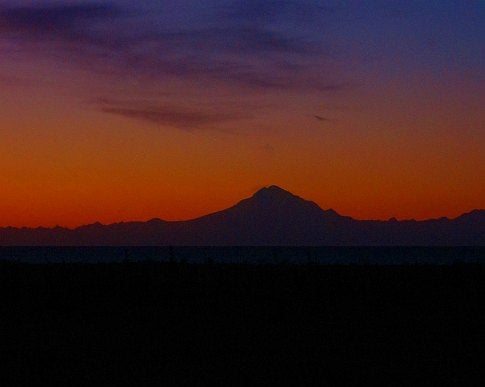The Shadow of Redoubt
Alaskans jittery as they wait to see what volcano will unleash

Life for people living in the shadow of a stratovolcano would be much simpler if eruptions were easily predicted. Earthquakes and steam-venting often signal an impending eruption, but the activity may go on for weeks or months before the eruption actually happens. The May 18, 1980, eruption of Mount St. Helens in southern Washington’s Cascade Range was preceded by almost two months of seismic activity and steam-venting. Many residents had begun to think the agencies issuing the warnings were “crying wolf,” and refused to leave homes located in the flow paths. Many others were in the scenic area hiking and camping.
But the mountain did blow — and it blew with a vengeance, spawning pyroclastic flows that traveled at 50 to 80 miles per hour and sending about 520 million tons of ash eastward across the United States.
The lengthy time span between pre-eruptive activity and the actual eruption can put area residents on edge, as they prepare…and wait. And waiting is exactly what Alaskans living near Redoubt Volcano in the Aleutian Range are doing now. On January 30, 2009, volcanic earthquakes and new steam vents on Redoubt prompted scientists at the Alaska Volcanoes Observatory (AVO) to warn that an eruption is imminent.
Unlike the shield volcanoes of Hawaii, which are characterized by non-violent eruptions of slow-moving lava, stratovolcanoes exhibit sudden explosive eruptions that send debris flows, lahars (mudflows), and hot ash traveling considerable distances from the volcano. Redoubt last erupted on December 15, 1989, and it continued to do so for five months. A volcanic ash cloud from the eruption caused all four engines on a KLM commercial airliner to die. The jet fell almost three vertical miles before two of the engines restarted and the pilots were able to land safely in Anchorage.
During the past week, activity at Redoubt has fluctuated, but then on February 5 a burst of intense seismic tremor occurred, lasting about four minutes. The back-and-forth acceleration and then calming down of activity over the past week is reminiscent of Redoubt’s 1989 eruption, and scientists believe an eruption similar to that one is the most likely scenario. Although whether that will happen tomorrow or two months from now is anyone’s guess.
Willing to bet on whether Mt. Redoubt will erupt before April 1st, 2009? Put your Pop$ where your mouth is on the PopSci Predictions Exchange!

On the Inlet
Mount Redoubt is an active stratovolcano and the highest mountain in Alaska’s Aleutian Range

April 21, 1990

Redoubt Volcano erupted on December 15, 1989, and continued to erupt for over five months

One of the most deadly hazards of stratovolcanoes such as Redoubt

Lahars carried large blocks of glacial ice many kilometers downstream

Anchorage

KLM Flight 867

Fumarole
New Holes

Full Steam